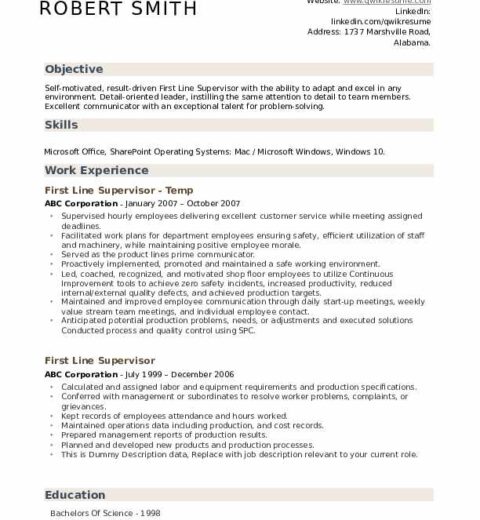As we progress toward 2025, the paradigm of resume formatting is undergoing a noteworthy transformation. The emphasis has shifted from the traditional text-heavy documents to aesthetically pleasing and technologically adaptable layouts. This evolution is not merely superficial; it reflects profound changes in how recruiters interpret qualifications and skills. The modern resume must encapsulate both information and artistry, converging practicality with visual appeal.
At the heart of this transformation is the overarching principle of brevity and clarity. Hiring managers are often inundated with applications; hence, a resume must immediately capture their attention. A well-structured resume employs clear headings, bullet points, and strategic white space to guide the reader’s eye. Information should be easily digestible, allowing key achievements and skills to be highlighted prominently. In 2025, less is indeed more.
A pivotal characteristic of resumes in the forthcoming years is the seamless integration of technology. With digital applications becoming the norm, resumes must ensure compatibility with applicant tracking systems (ATS). This involves utilizing standardized formatting that does not compromise the aesthetic. It is crucial to use conventional section titles such as “Experience,” “Education,” and “Skills,” while maintaining a level of creativity that distinguishes one’s document from a sea of sameness. Fonts such as Calibri, Arial, and LinkedIn’s own typeface remain reliable choices, presenting a crisp and professional image.
Moreover, color psychology plays an instrumental role in the design of resumes. Strategically selected color schemes can evoke various emotions and perceptions. For instance, shades of blue typically denote professionalism and trustworthiness, while greens can signify growth and innovation. In 2025, savvy applicants will leverage color palettes that communicate personal branding effectively while ensuring they remain within the bounds of professionalism. A muted palette accentuated with a bolder hue for headings or key information can strike the right balance between vibrancy and decorum.
Alongside color, the use of visuals is becoming increasingly paramount. Infographics, charts, and icons can translate complex information into easily understandable snippets. For instance, instead of a long paragraph outlining career history, a timeline graphic can illustrate a candidate’s journey, denoting key milestones with accompanying visuals. This not only enhances aesthetic appeal but also fosters engagement. However, it is essential to exercise restraint; overly cluttered designs can detract from the core message, rendering the resume ineffective.
Another significant trend is the incorporation of interactive elements in resumes. Hyperlinks to online portfolios, LinkedIn profiles, or professional websites are expected to become standard. Candidates should ensure that these links are functional and lead to polished, up-to-date content. The ability to showcase one’s work through visuals or video snippets is an innovative way to captivate hiring personnel, further enhancing the narrative of one’s professional journey.
The inclusion of a personal brand statement at the top of the resume is gaining traction. This succinct description reflects an individual’s career aspirations, values, and unique qualifications. Placed prominently beneath one’s name, it should encapsulate the essence of the applicant’s professional identity. An effective personal brand statement should instill curiosity, prompting the reader to delve deeper into the document.
Additional sections that spotlight one’s soft skills are becoming more prevalent in modern resumes. Attributes such as adaptability, creativity, and collaboration can enhance a candidate’s profile. Including recommendations or testimonials from former employers, if formatted correctly, adds credibility. This will appeal to organizations seeking candidates who not only meet hard skills requirements but also fit seamlessly into their corporate culture.
As we look ahead to 2025, the expectation for inclusivity and diversity will also shape resume formatting. Candidates will be encouraged to share experiences related to diversity initiatives or cross-cultural collaborations in an engaging manner. This can appear in a dedicated section or woven into previous job descriptions. Highlighting one’s commitment to diversity will not only appeal to progressive companies but also add depth to a resume.
The traditional one-page resume is evolving. While brevity has its merits, the need to convey comprehensive experience may warrant two pages. This transition should be strategic, ensuring that every piece of information has purpose and relevance. Maintaining clarity of design across multiple pages is essential; consider using section dividers and consistent headers to promote cohesion.
In summary, crafting a resume for 2025 necessitates a multifaceted approach encompassing progressive design, technological integration, and an emphasis on personal branding. The confluence of aesthetics and functionality will dominate the landscape of modern resumes. As potential employers continue to seek out creative and adaptive candidates, the document that emerges must resonate on both visual and intellectual levels. The modern resume of 2025 will not only recount a career but visually narrate a professional story, captivating and compelling in its presentation.
Ultimately, this curated blend of artistry and articulation transcends mere formatting; it is an emblem of an individual’s professional ethos, setting the stage for future endeavors. As job markets become increasingly competitive, investing effort into resume design will undoubtedly yield dividends in one’s career trajectory.




